This step-by-step guide provides a comprehensive approach to setting up smart thermostats to improve energy efficiency in your home. It highlights how these devices can optimize your heating and cooling systems, ultimately resulting in lower energy bills and a decreased carbon footprint. By following the outlined procedures, you will learn to customize your thermostat settings, empowering you to achieve maximum energy savings while enjoying enhanced comfort.
Smart Thermostats: Things I Wish I Had Known Sooner…
Choose the Right Smart Thermostat
Research your options for smart thermostats that fit your home’s needs. Start by checking the compatibility of the thermostat with your HVAC system. Look for specifications that indicate whether the thermostat works with central heating and cooling, heat pumps, or radiators. Read reviews and manuals to ensure your chosen model can integrate seamlessly.
Evaluate the features that matter most to you. Consider the following:
- Learning Capabilities: Choose a thermostat that learns your schedule and preferences over time, like the Nest Learning Thermostat, which adjusts temperatures based on when you’re home or away.
- Remote Access: Look for models that offer mobile app control, such as the Ecobee SmartThermostat, allowing you to adjust the temperature from anywhere.
- Energy-Saving Modes: Select a thermostat with energy-saving features, like the Honeywell Home T9, which can optimize your heating and cooling based on your usage patterns.
Compare different models, focusing on their pros and cons, and choose one that aligns with your budget and lifestyle. Make a list of your home’s specific needs to guide your decision, ensuring you select a smart thermostat that enhances your comfort while being energy-efficient.
Gather Necessary Tools
Gather the necessary tools before starting your installation. Check your thermostat’s manual for a list of recommended tools, as some models may require specific items for setup. Ensure you have a screwdriver, as you’ll likely need it to remove the old thermostat and secure the new one. If your thermostat requires mounting into a wall or contains wiring, prepare a drill as well in case you need to create or expand holes for anchors.
Position a level in place to guarantee your new thermostat is straight. If your installation includes connecting wires, keep wire strippers handy to make clean cuts and connections. Double-check your tool selection against the manufacturer’s instructions to avoid any surprises during installation. Having everything ready will make the process smoother and more efficient.
Turn Off Power to Your HVAC System
Locate your circuit breaker panel, typically found in basements, garages, or utility closets. Identify the correct breaker that controls your HVAC system; it may be labeled “HVAC,” “Furnace,” or “AC.” Flip the breaker switch to the “Off” position. This step is crucial for safety, as it cuts off the electrical power to your heating and cooling system, preventing any risks of electric shock or short circuits while you work on maintenance or repairs.
Confirm that the power is off by checking your thermostat; it should not display any information or settings. If you have a multimeter, you can further verify the absence of power by testing the connections at the HVAC unit itself. Once you’ve ensured that the power is completely disconnected, you can proceed with your installation or maintenance tasks with confidence, knowing you’ve taken the necessary precautions.
Remove the Old Thermostat
Carefully lift the cover of the old thermostat, ensuring you don’t damage the base. Look for screws or clips that might hold the cover in place and remove them gently if necessary. Once the cover is off, examine the wires connected to the thermostat. Disconnect each wire one at a time, taking care to keep them from falling back into the wall. As you disconnect each wire, label them according to their respective terminals using masking tape or wire tags. For example, if a wire is connected to the “R” terminal, label it “R” before moving to the next one.
Take a mental note or a clear photo of how the wires are configured, as this will be crucial for correctly installing your new thermostat. Ensure you observe the color coding and any specific label indications to avoid confusion later on. If you feel uncertain about any connections, it’s a good idea to write down your observations or refer to the manufacturer’s manual for guidance.
Install the Smart Thermostat
Mount the new smart thermostat on the wall according to the manufacturer’s instructions. First, hold the thermostat base against the wall where you want to install it. Use a level to ensure it is straight, then mark the screw holes with a pencil. Drill holes in the wall if necessary, then insert wall anchors if required. Align the base with the marked holes and secure it in place using screws.
Connect the labeled wires to their corresponding terminals on the thermostat. For example, if you have a red wire labeled “R,” connect it to the “R” terminal on your device. Make sure to tighten the terminal screws securely so that there’s no chance of a loose connection. Check the existing wiring system; if you have multiple wires, refer to the installation guide to ensure you’re making the right connections. Confirm that each wire is properly seated before proceeding.
Restore Power and Configure Settings
Restore power at the circuit breaker. Locate the breaker box and find the switch that controls your heating and cooling system. Flip the switch back to the “On” position. This will provide power to your new thermostat.
Power up your thermostat. Wait a moment for it to boot up, and then follow the on-screen prompts.
- Connect to Wi-Fi by selecting your network from the list and entering the password.
- Customize your temperature schedules by selecting your preferred times and temperatures for each day of the week.
- Explore additional settings, such as vacation mode and energy-saving options, to optimize your home’s comfort and efficiency.
Make sure to save all your settings before exiting the configuration menu. This ensures that your thermostat will operate according to your preferences!
Download the App and Set Up Remote Access
Download the companion app for your smart thermostat on your smartphone or tablet. Visit your device’s app store and search for the specific app associated with your thermostat brand. Tap ‘Download’ or ‘Install’ to begin the process. Once installed, open the app and follow these steps:
- Create an account by entering your email address and creating a secure password.
- Confirm your email address by checking your inbox for a verification link.
- Open the app and log in with your newly created account.
- Locate the option to add a device or link your thermostat. This may be labeled as “Add Thermostat” or “Link Device.”
- Follow the on-screen prompts to connect your thermostat to your home Wi-Fi network. Ensure the thermostat is powered on and within range.
Enable remote access and enjoy additional features like energy usage tracking. Access the app settings and look for options related to remote access, energy reports, or notifications. Customize your preferences for monitoring and alerts, and start managing your home’s climate efficiently from anywhere.
Maximizing Savings and Comfort
In conclusion, setting up your smart thermostat is a fantastic step towards achieving energy efficiency in your home. By using the tips and steps outlined in this blog post, you can take full advantage of your device’s features to reduce energy consumption and lower your bills. Remember to monitor your usage and make adjustments as necessary to ensure you’re maximizing your savings. Embrace this smart technology, and enjoy the comfort and efficiency it brings to your living space!

![Apple Watch Series 9 [GPS 45mm] Smartwatch with Midnight Aluminum Case with Midnight Sport Band M/L. Fitness Tracker, ECG Apps, Always-On Retina Display, Water Resistant](https://smarthomepro.info/wp-content/uploads/2024/07/apple-watch-series-9-gps-45mm-smartwatch-with-midnight-aluminum-case-with-1-340x340.jpg)
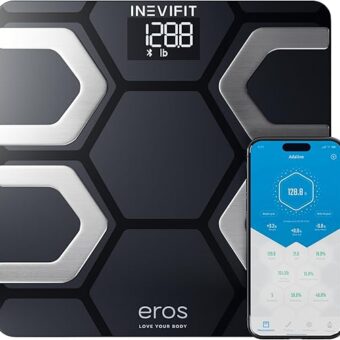
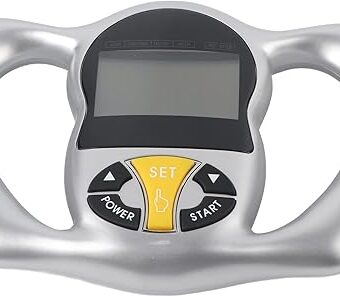
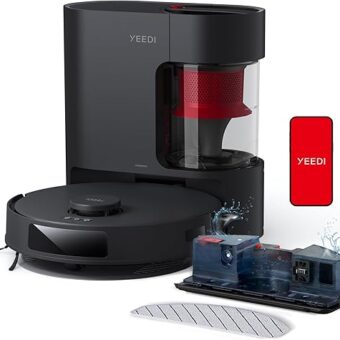
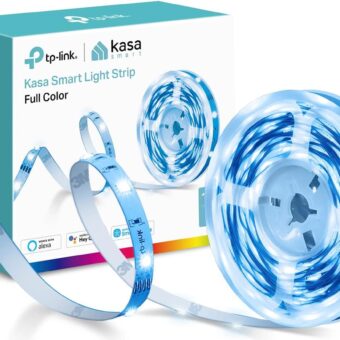
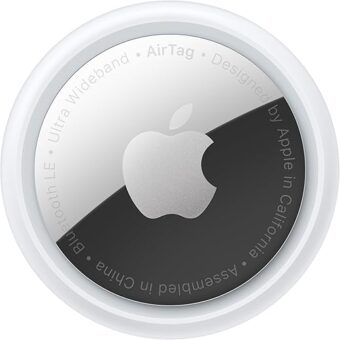






I installed a Honeywell Home T9 thermostat recently. It’s so easy to use and the app is pretty straightforward. But I wish I had known about the importance of turning off the HVAC power before starting! Almost blew a fuse thinking I could skip that step. Lesson learned!
Glad to hear you got the Honeywell T9 up and running! That power-off step is crucial, but it’s easy to overlook. How are you finding the temperature control with the app?
A related topic you might want to explore is how to optimize energy usage with smart lighting. It’s amazing how much you can save when everything is synced up!
Definitely! Smart lighting can make a huge difference in energy consumption. Pairing it with your smart thermostat creates a more efficient home environment. Thanks for the suggestion!
I went with the Nest Learning Thermostat and it was super easy to set up. I love how it learns my schedule and adjusts the temps automatically. Honestly, it feels like I’m living in the future! Anyone else using Nest?
I’ve been eyeing the Emerson Sensi Touch for its budget-friendly price and user-friendly interface. Can anyone share their thoughts on it? Would it be worth the buy?
The Emerson Sensi Touch is a solid choice! It doesn’t have all the bells and whistles of the pricier models, but it gets the job done efficiently. Plus, it has good reviews for reliability. You won’t be disappointed!
I had to adapt the steps a bit since my old thermostat had some weird wiring. I took a picture of the wires before removing the old unit, which helped me reconnect everything correctly. I’d suggest others do the same if you’re unsure about the wiring!
Great tip! Documenting the wiring is super helpful, especially for those who might not be familiar with HVAC systems. Thanks for sharing that!
If you’re considering a smart thermostat, think about integrating it with a complete smart home setup. I’ve got smart lights and a smart speaker, and they all work together with my thermostat for ultimate convenience. It’s so cool to control everything from my phone!
Absolutely! Integrating your smart thermostat with other devices can enhance your overall home automation experience. Have you found any specific routines that work well for you?
Thanks for sharing your experience! The Ecobee is indeed a fantastic option, especially with those sensors. Have you tried the Home/Away feature? It can save even more energy!
I just installed the Ecobee SmartThermostat and it’s been a game-changer! My energy bill dropped by 20% in just one month. The remote sensors really help with keeping the temperature balanced throughout my home. Highly recommend it! Anyone else had similar experiences?